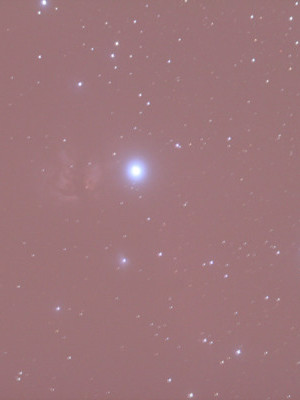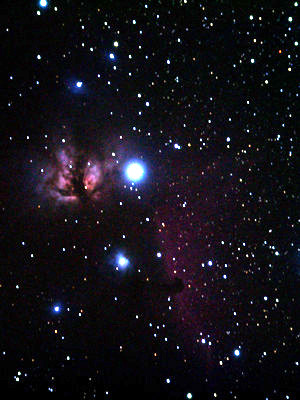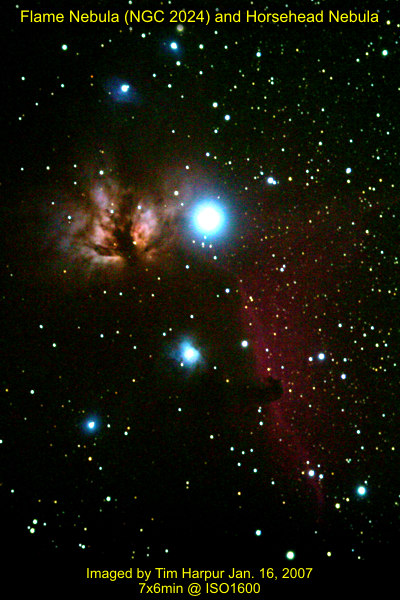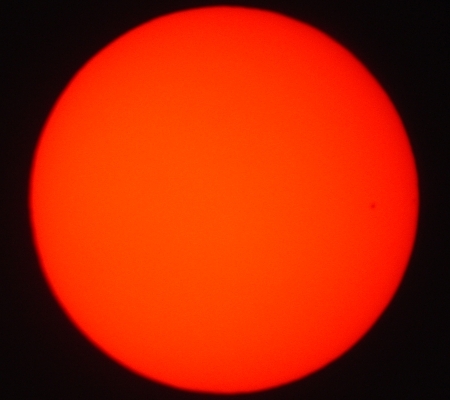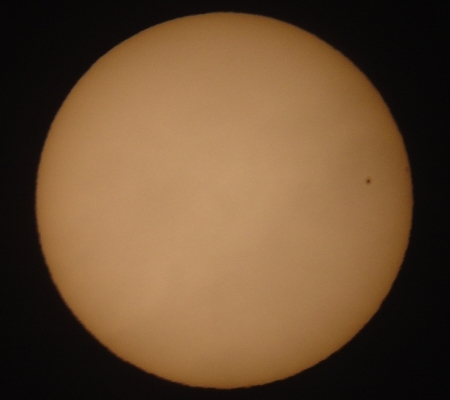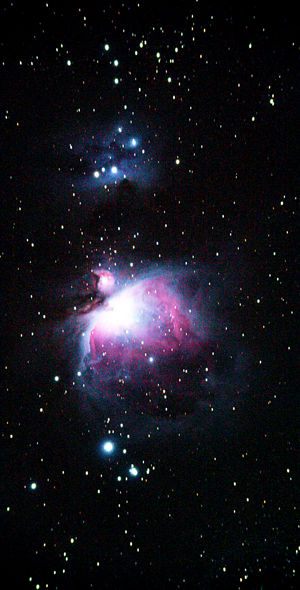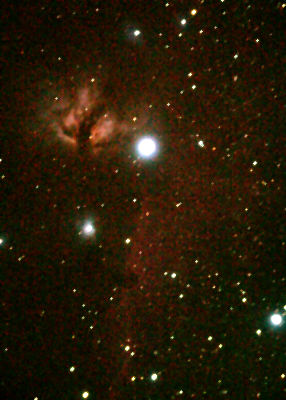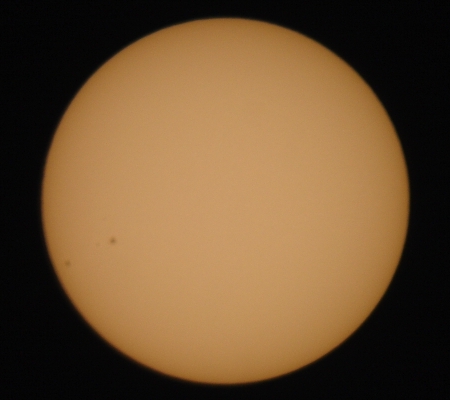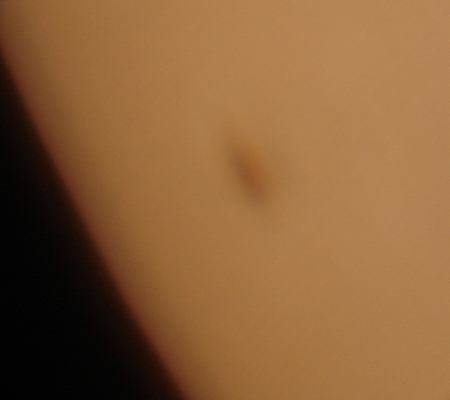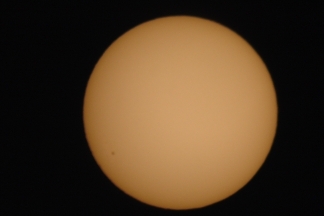This is a continuation of my previous blog of Jan 1. Jan 2 was another fine morning for imaging sunspots and sorting out the problems encountered mentioned in my previous blog. Good news and bad news about the RA motor drive on my Orion German Equatorial mount. The good news is that it now works, sort of. The bad news is that it only works when I slew to the east. It won’t slew to the west which means it won’t track a celestial objects. Back to plan B used yestereday, ie setting a 10-sec delay, manually pre-positioning the frame, then clicking the remote shutter and pray that when the picture is taken 10 seconds later, the spots of interest will be centred.
First picture is of entire sun using my V1. Sunspots 830 and 834 are clearly visible, whereas 833 is almost invisible. I increased the camera optical zoom to its maximum, 4X, and took another picture where all spots are easily discernible, as well as a faint fourth. However, that image is in my Gallery at HAA.
V1 image details: ISO 200, F3.5, 1/1000 sec at 9:59 am EST.
Second picture is a closeup of sunspot 330, the furthest west of the cluster. I chose it because of the difficulty of focusing the others. Now if I had used a reliable motorized mount, the issue would be moot. OK, I’m getting ahead of myself. The forecast for Jan 3 is for clear skies in the morning. I hope to use my tried and true Sphinx mount and see if the pictures turn out better. Stay tuned. Oh, by the way, did you notice that I set the colour setting on my H5 to “Natural” and obtained a more colourful effect?
H5 image details: ISO 200, F3.7, 1/15 sec at 10:39 am.
